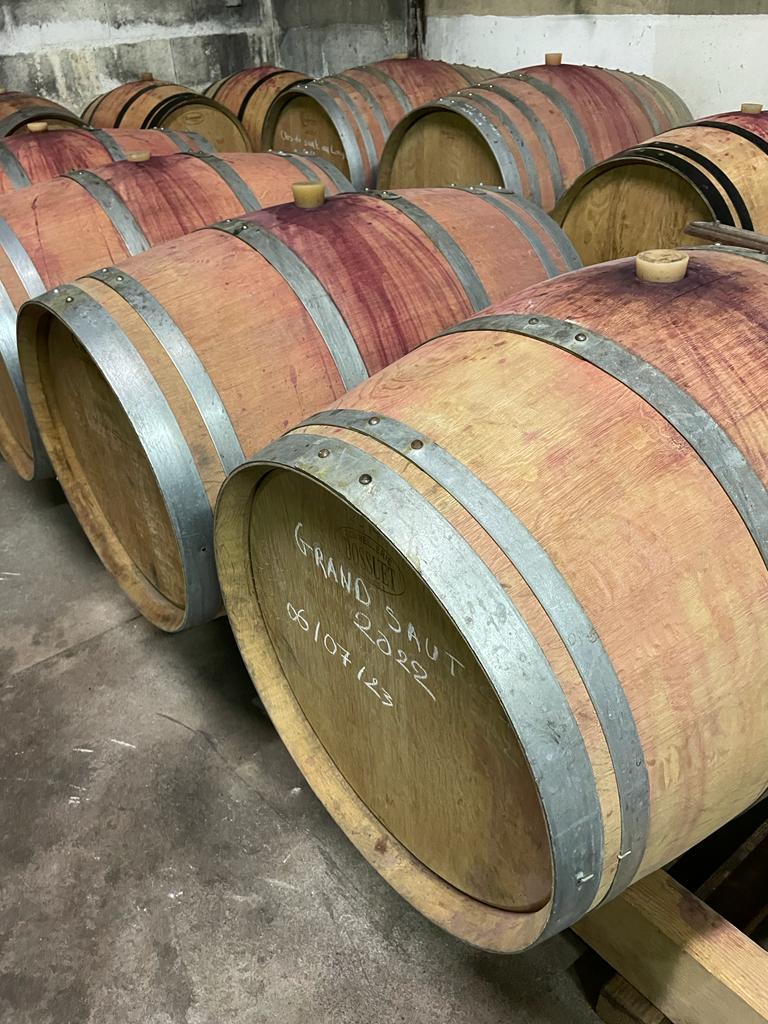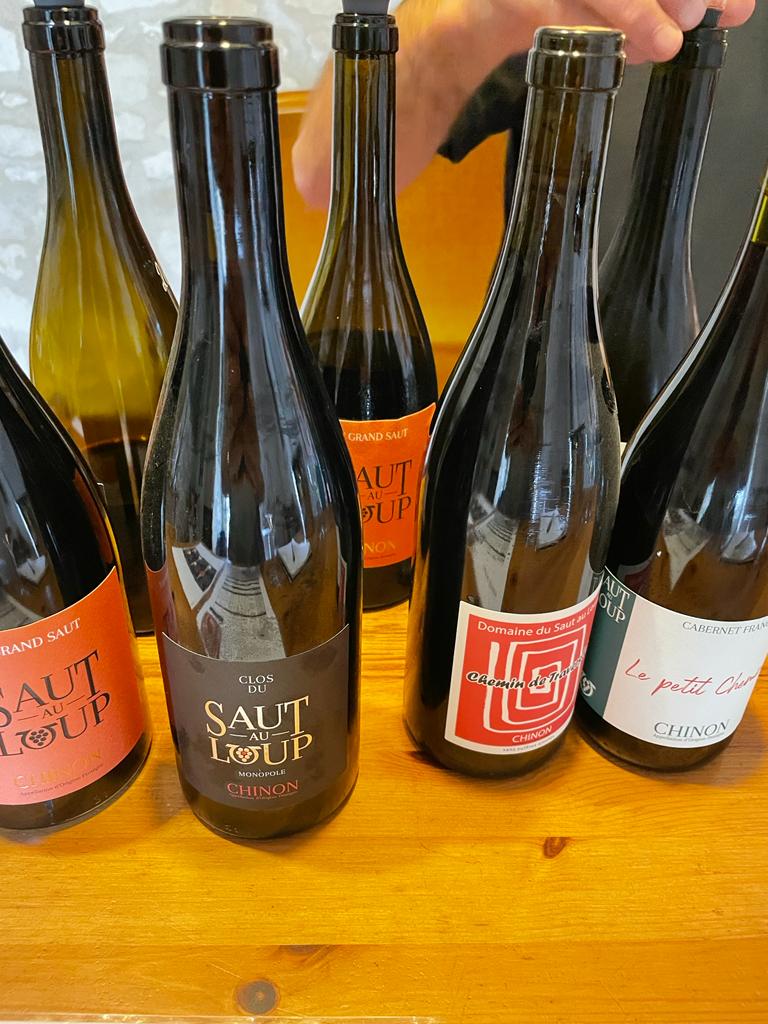FOCUS ON... Domaine du Saut au Loup
08/08/2023
Here’s a new winery we’d love to introduce you to: Domaine du Saut au Loup. A new addition to the Brompton Wine roster, Richard got to know Eric on his recent (rainy) visit to the Loire and we’re delighted to bring his wines to the UK.
A brief history: the Domaine was previously known as Domaine Dozon and was ran by the Dozon family for five generations. In 2013 Eric Santier (a native of Chinon, although not coming from a family of winemakers) decided to pursue his passion and bought the estate. He had trained in Bordeaux and spent two years working in another AOC Chinon domaine to ready himself for this project, and his aim was simple but ambitious – to realise the tremendous potential of this classic wine region.
The Domaine comprises 14 hectares of vines known as “Le Saut au Loup.”
Saut means spring / leap / jump or fountain in old French, and Loup means ‘wolf’ - the vineyards are located in the middle of a woods in which wolves would have lived in the past, and they would have come to drink in the area where the top of the vineyard is today. “Le Saut au Loup” sits on the left bank of the Vienne River which means plenty of sun from the south and the southeast… resulting in happy vines.
Speaking of vines – let’s talk grapes. Cabernet Franc rules the roost here, claiming 97% of the area, with the Loire’s traditional white variety Chenin Blanc occupying a cozy corner alongside it. As a result, red wine takes up most of the spotlight (about 90%) but they also make small amounts of both white and rosé wine. More than 75% of their vines are at least 35 years old, and they keep small areas of the vineyard free for new younger vines or simply left fallow.
And that leads us on to why we like them: there’s nothing too complicated happening here! The winery and wines are very authentic – Eric has a good ethos, and good practices. He started the switch to organic in 2020 and hopes to achieve certification this year. The cultivation methods are sustainable: natural sodding between rows, a longer-term aim to go back to old-school tilling (no herbicides), and generally a low-input philosophy. Eric chooses to use less chemicals, and amp up the plant care instead. Less pesticide, more hands-on methods (like getting rid of buds and thinning leaves.)
When it comes to the wine itself, their red wines can be matured in vats, using micro-oxygenation; or could be left to develop in oak barrels (it follows that there will be traditional methods mixed with a few modern twists.) Their whites are vinified in 300litre wooden casks and left to hang out with the lees for 6-9 months.
So what are we bringing over for you? Two reds for now. We believe (and hope?) that UK tastes are moving in the direction of Cabernet Franc and these are two lovely examples to get your teeth into.
Le Petit Chemin is a selection from vines growing on silty soils with flint clays. It’s manually harvested – all of their wines are – and then undergoes cold maceration for ten days before the natural indigenous yeasts get to work. Following fermentation, ‘Le Petit Chemin’ rests in concrete tanks for 6 months and emerges a generous and voluptuous wine, with aromas of red fruits, currants, and a hint of spice.
Le Grand Saut is a special selection from midway up the hill, where sandy clay meets micaceous chalk. Following the hand harvesting, it gets the VIP treatment with fermentation taking place in conical oak before a year’s ageing in barrel. The result is a more complex wine, full of dark berries with liquorice, vanilla and toast.

